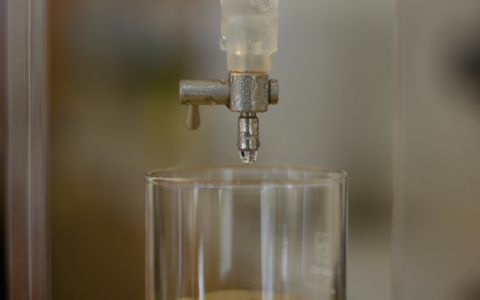Shubat is a favourite part of the daily diet for many in Kazakhstan. A lot has been said about its miraculous effects on human health. However, the Kazakhstani and Czech experts (1) reveal in a new study that the food we consider fresh and natural can, in fact, be dangerous. Analysis of samples taken in Mangystau shows that camel milk often contains alarmingly high concentrations of toxic substances that can cause cancer or damage reproduction (2). The contamination comes from industrial sources – old capacitors, abandoned production sites or mines, and also from freely accessible waste dumping sites, and hazardous waste water reservoirs (3). Experts call on the state authorities to take immediate actions (4), urge farmers to prevent their animals from entering polluted areas, and advise consumers to choose their food carefully (5).
Shubat is a favourite part of the daily diet for many in Kazakhstan. A lot has been said about its miraculous effects on human health. However, the Kazakhstani and Czech experts (1) reveal in a new study that the food we consider fresh and natural can, in fact, be dangerous. Analysis of samples taken in Mangystau shows that camel milk often contains alarmingly high concentrations of toxic substances that can cause cancer or damage reproduction (2). The contamination comes from industrial sources – old capacitors, abandoned production sites or mines, and also from freely accessible waste dumping sites, and hazardous waste water reservoirs (3). Experts call on the state authorities to take immediate actions (4), urge farmers to prevent their animals from entering polluted areas, and advise consumers to choose their food carefully (5).
“We took samples of camel milk and shubat from farmers in six different locations in Mangystau and analysed them for organic chemical substances and heavy metals. We also compared our results with previous studies carried out by Kazakhstani experts,” said Dmitriy Kalmykov, director of Karaganda Regional Ecological Museum. “Levels of contamination, especially by polychlorinated biphenyls (PCBs) and zinc, are alarmingly high,” he added.
“Polychlorinated biphenyls can cause cancer, harm the liver, or damage reproduction. Zinc is responsible for anaemia and damage of the pancreas,” says Kirill Osin, the director of non-governmental organization Eco Mangystau. “In certain parts of Mangystau, we can observe a disturbing increase in child morbidity rates. No doubt there is a link with long-term living near the industrially polluted spots,” Osin explains.
Jindrich Petrlik, an expert on toxic substances and waste management from Arnika Association, in the Czech Republic, explains how people can protect their health: “Farmers should prevent their animals from entering industrial sites or polluted spots and from feeding on the waste. Consumers have to be very careful when buying the food and always ask for its origin. But the major challenge is for the state authorities: to immediately fence off polluted areas and set up the plan for the remediation of contaminated sites and the destruction of obsolete PCB oils. Securing funds from national and international sources can help. Safe clean-up and proper waste management is the only way to avoid serious health risks. It is also important to monitor and prevent contamination by polyaromatic hydrocarbons which were found in camel milk in high, though not dangerous concentrations,” the expert says.
According to the new report, toxic pollution in Mangystau was also a reason for mass deaths of the seals in the Caspian Sea in 2000. More than 15,000 seals died, most of them in the Northern Caspian Sea near Kazakhstan (more than 10,000). A high level of contamination resulting from the continuous long-term impact of the polluted environment on the animals was identified as a cause in combination with the virus of “canine distemper.” Highly concentrated PCB, DDT, chlordane, HCB, and some heavy metals (such as zinc) found in the bodies of dead seals influenced their fertility and other physiological functions.
“Based on the experience with available technologies and the requirements of international Stockholm Convention, we suggest the use of certain non-combustion technologies for the disposal of remaining PCB oils and wastes contaminated by PCBs,” Jindrich Petrlik explains the crucial steps. The new study was financed by the European Union and Transition Promotion Programme of the Czech Republic.
Notes for editors:
1) Toxic pollutants in camel milk from the Mangystau Region of Kazakhstan. Results of sampling conducted in 2015–2016: full report
2) Impacts of selected chemical substances on human health (in Russian only):
Zinc >>> / PCB >>>
3) Non-governmental organizations developed an online map of environmental hot spots in Mangystau. It is freely accessible and citizens can report new issues to the website administrator.
4) What should the state authorities do to protect the citizens of Mangystau from the contamination of foodstuff by dangerous PCBs?
- Complete inventory of PCBs (including wastes contaminated with PCBs)
- Inventory of sites contaminated by PCBs
- Plan for the remediation of contaminated sites and the destruction of PCBs and/or more complex destruction of waste containing persistent organic pollutants (POPs)
- Setting criteria for choosing the best technology to destroy PCBs
5) Camel milk and shubat: Healthy drink or danger? A guide for farmers and consumers (in Russian and Kazakh only)







